You’ve got a small outdoor space and want it to feel like a real garden retreat? Trust me, you can absolutely do it. There are tons of clever ways to make even the tiniest yard, balcony, or patio feel cozy and lush.
Small gardens don’t need a big budget or lots of room. They can totally change the vibe of your home, bringing in fresh air and a little slice of nature right to your doorstep.
The best part? You’ve got so many easy, smart options to use every inch of space and create a garden that fits your style.

Maybe you want a quiet spot to chill, or just a splash of green to perk up your home. Either way, a small garden can totally work for you.
1. Vertical herb garden using wall-mounted planters
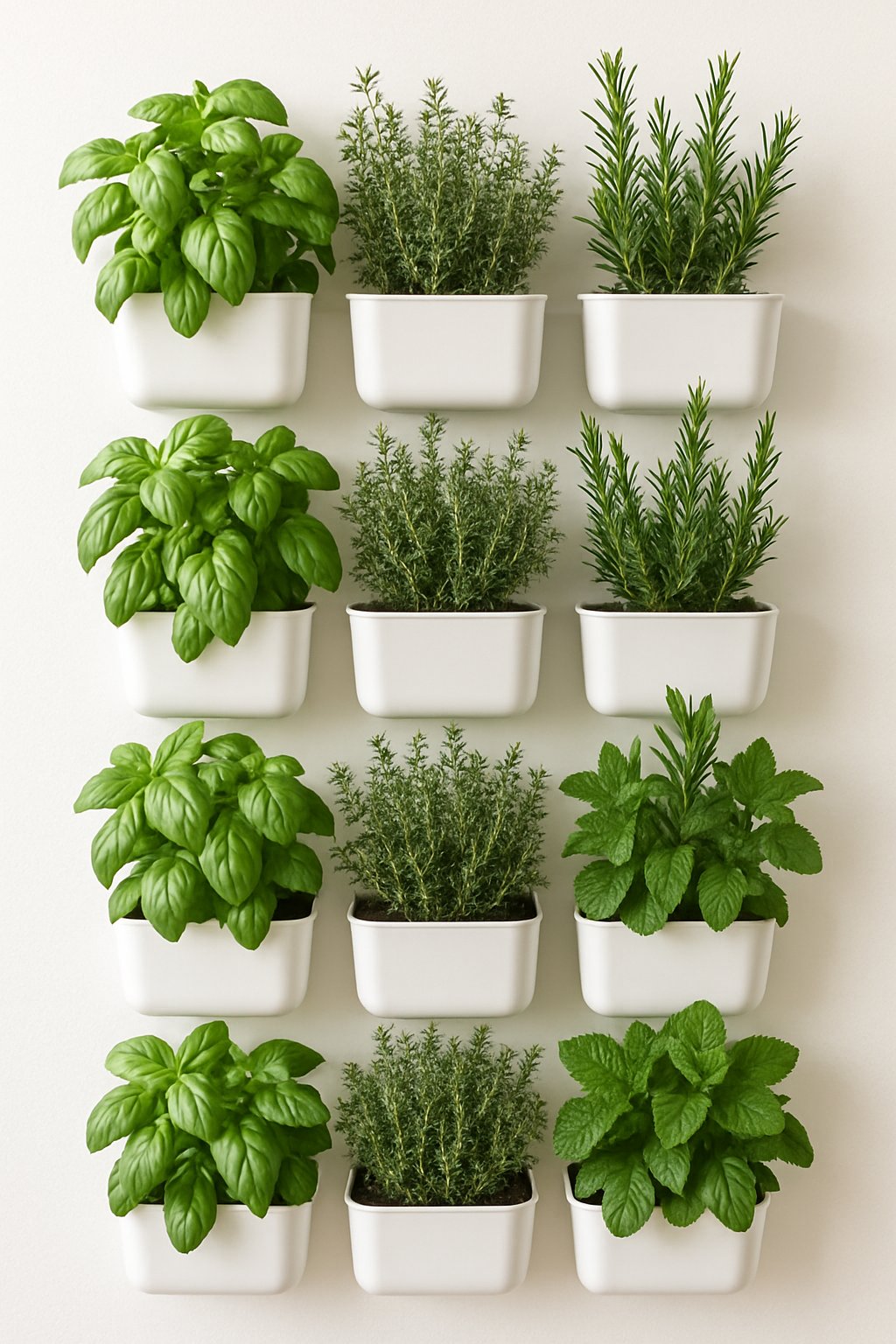
You probably think growing fresh herbs takes up a ton of space, right? Nope. Wall-mounted planters let you grow a mini herb garden right on your kitchen wall.
These planters go up, not out, so you save space and keep your herbs handy. Grabbing fresh basil or parsley for dinner? It becomes second nature.
Paint or stain the planters to match your vibe. They work inside or out—even in an apartment. Mixing herbs in a vertical setup keeps things tidy and thriving.
Expert Tip From MrPlanter: Pick a sunny wall near your kitchen. Water gently, but do it regularly so your herbs stay happy.
2. Miniature succulent terrariums in glass jars
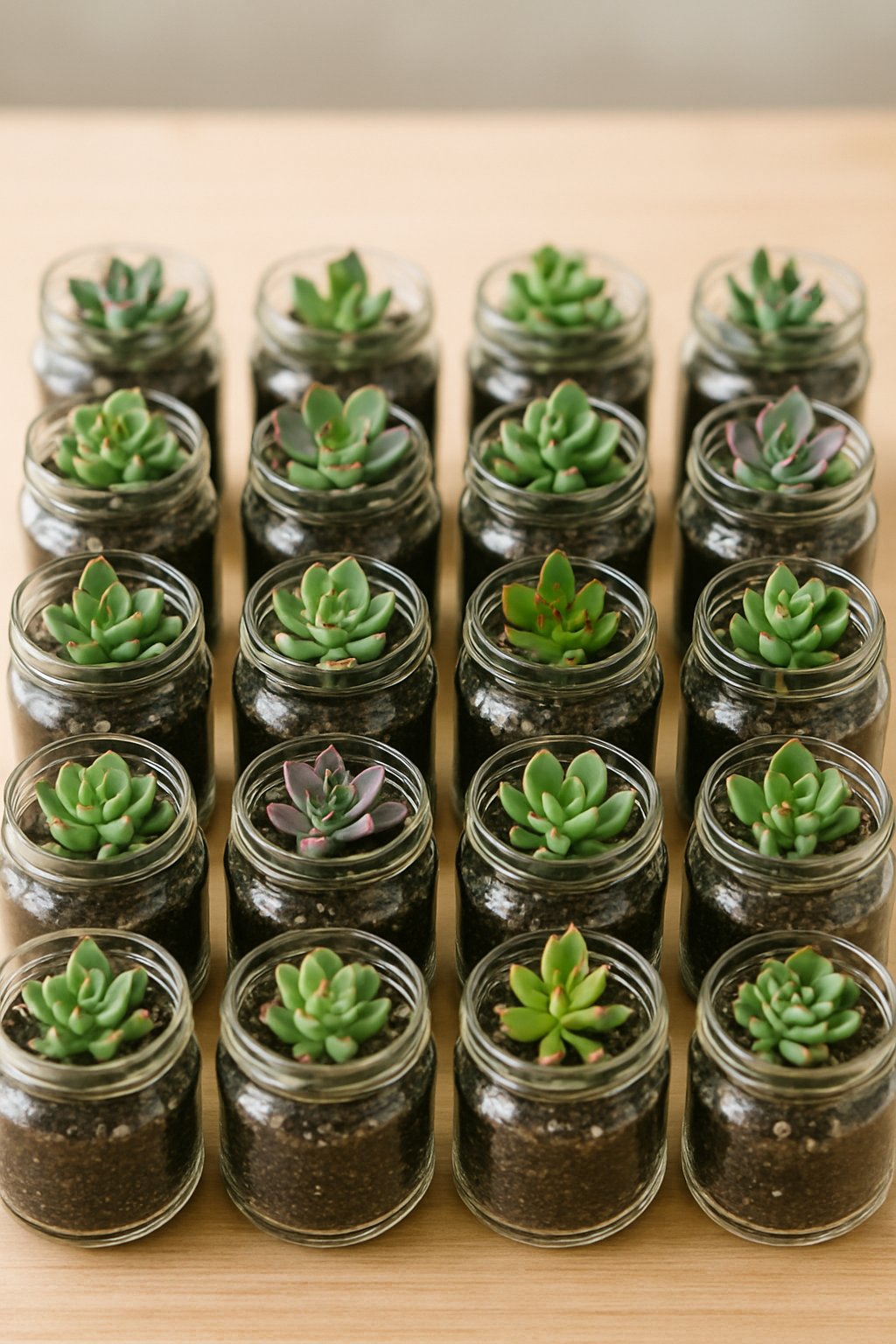
You might imagine plants need lots of space, but miniature succulent terrariums don’t. You can make a tiny garden inside a glass jar—so simple, and it looks awesome on a desk or shelf.
Start with pebbles for drainage, then add succulent soil, and plant your minis. The glass lets you watch them grow from every angle.
Decorate with stones, moss, or little figurines if you’re feeling creative. Just go easy on the water—succulents like it dry.
Expert Tip From MrPlanter: Use a jar with a wide opening so you can plant and care for your succulents without a struggle. Bright, indirect light helps them thrive.
3. DIY pallet wood raised garden beds
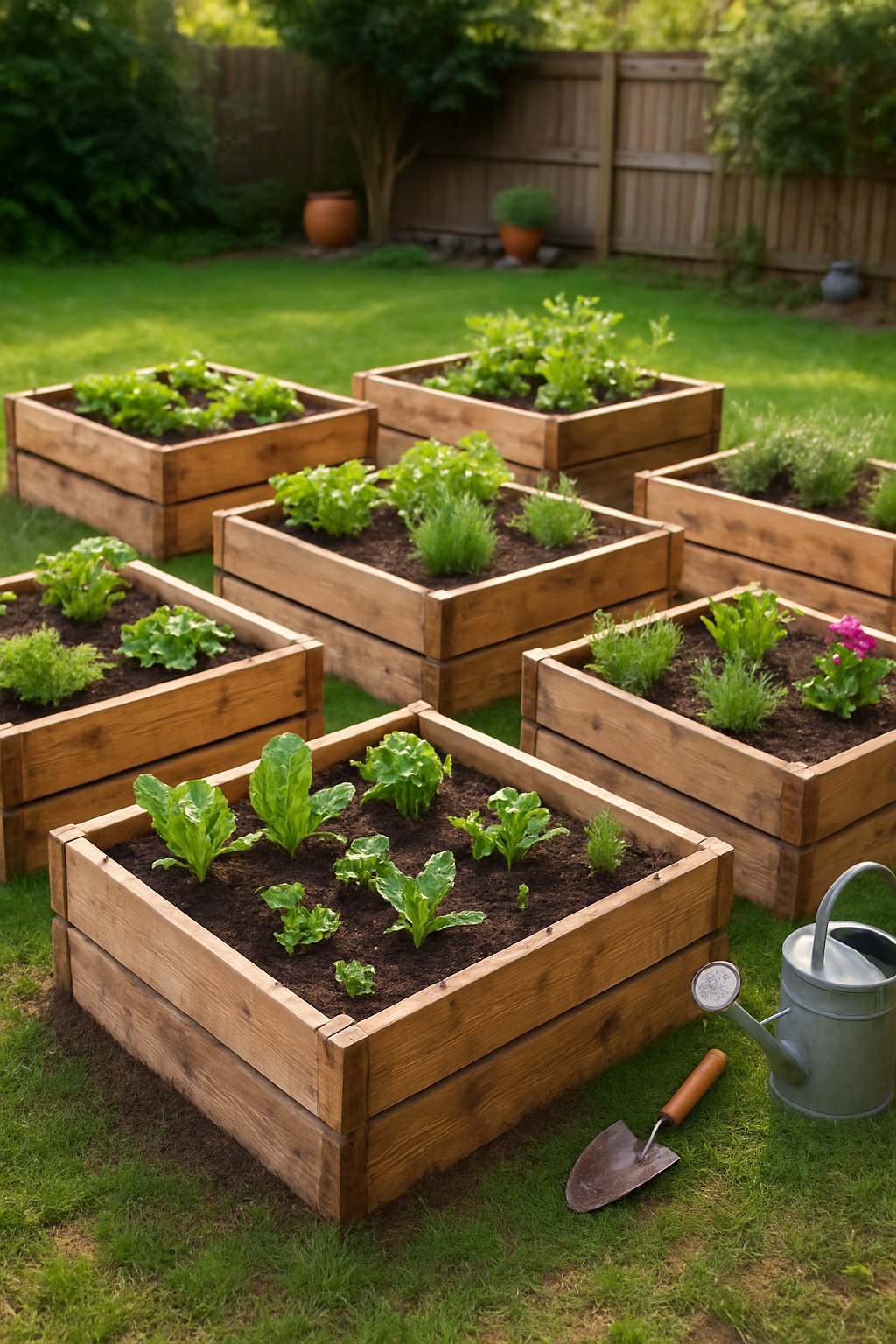
You might see wooden pallets and think “shipping,” but honestly, they make fantastic raised garden beds. Pallets are cheap, sturdy, and easy to move if you want to rearrange your garden.
Use them as they are or take them apart for more options. Stacking pallets gives your plants depth and helps water drain better.
Pallet beds keep weeds down and protect your plants from pests. Plus, you don’t have to bend as much. For really tight spaces, you can even build vertical beds with pallets as trellises.
Expert Tip From MrPlanter: Check pallets for chemicals before using them. A quick sanding makes a safer, smoother spot for your plants to grow.
4. Hanging baskets with trailing petunias
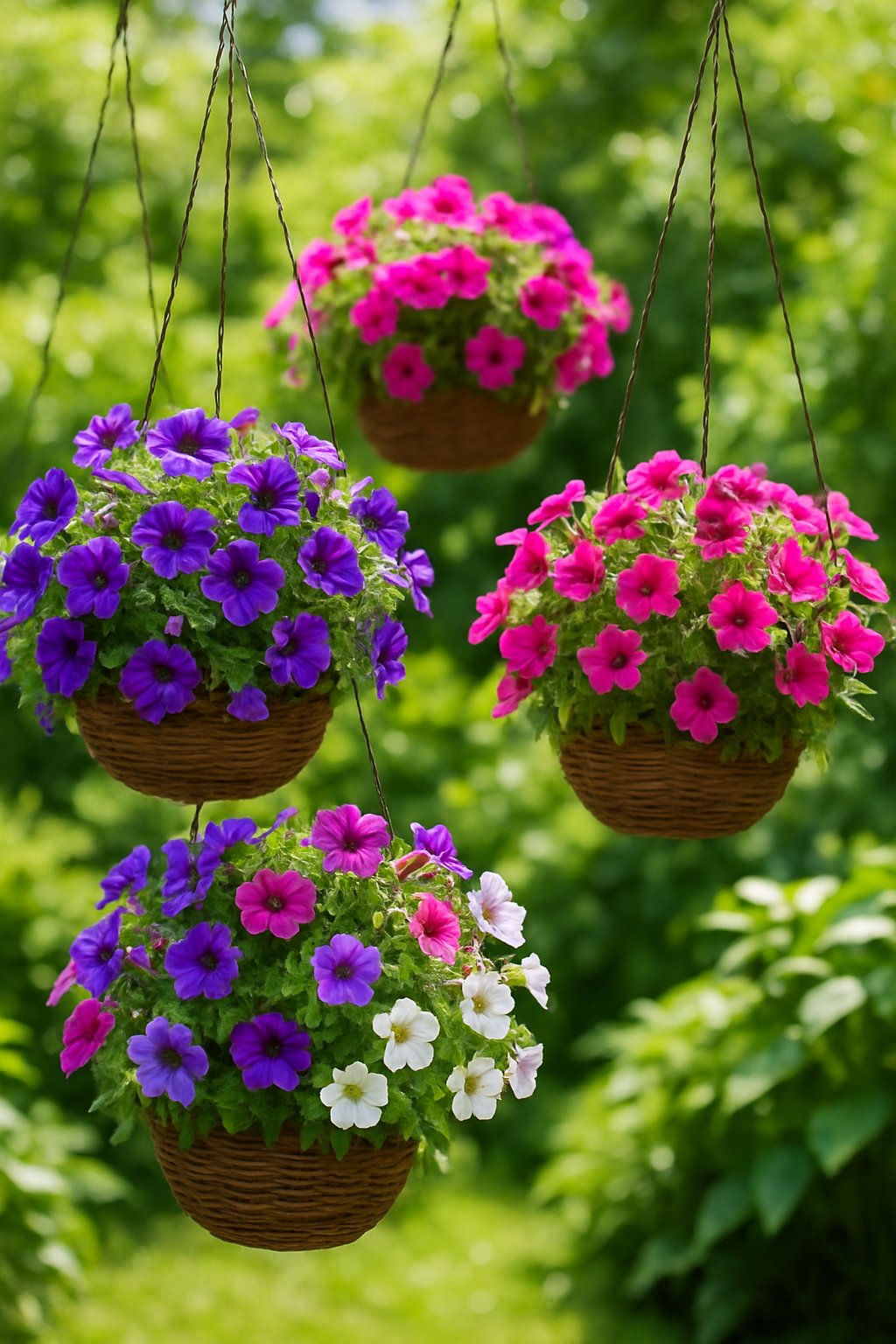
You might worry hanging baskets are tough to keep full and bright, but trailing petunias make it easier than you’d think. Their long stems spill over the sides, adding color and life to any small space.
Petunias come in so many colors, from soft pastels to bold reds and purples. They bloom almost nonstop if you give them sun and water.
Mix in other trailing plants if you want more texture. Hanging baskets don’t take up floor space, so they’re perfect for porches and balconies.
Expert Tip From MrPlanter: “Go for trailing types like Wave or Surfinia. Keep them in partial sun and water often for the brightest blooms.”
5. Succulent frames to save space
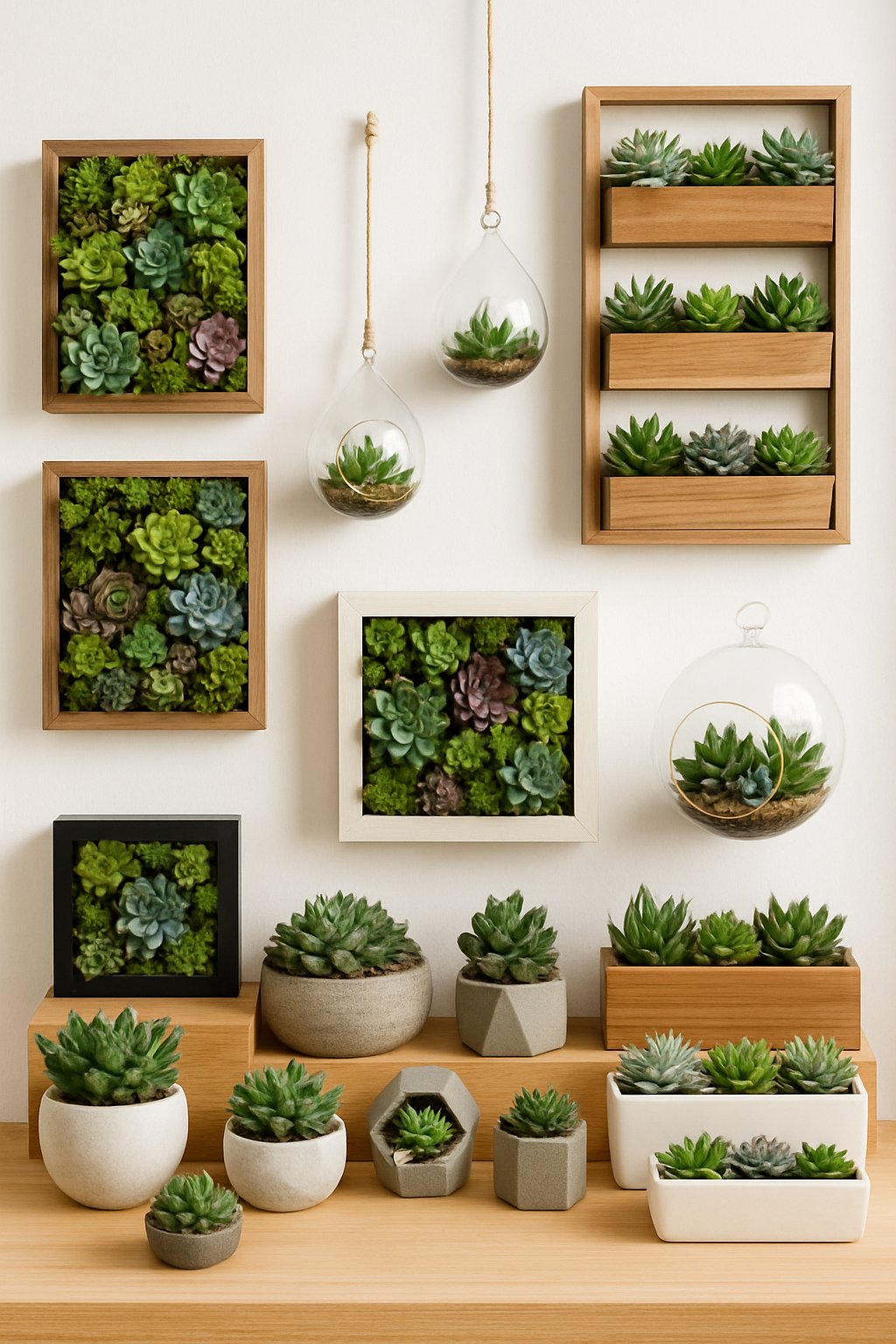
You don’t need pots cluttering your windowsills when you can use succulent frames instead. These frames let you turn your wall into a little garden, saving space and adding a fresh look.
Just hang up the frame, fill it with small succulents, and enjoy. Succulent frames fit indoors or out, and you can find styles to match your space.
Mix up the colors and shapes for a one-of-a-kind look. It’s a sneaky-smart way to bring nature indoors.
Expert Tip From MrPlanter: “Pick a frame with good drainage. Place it where your succulents get enough light, but don’t roast them in direct sun.”
6. Compact citrus tree in a large planter
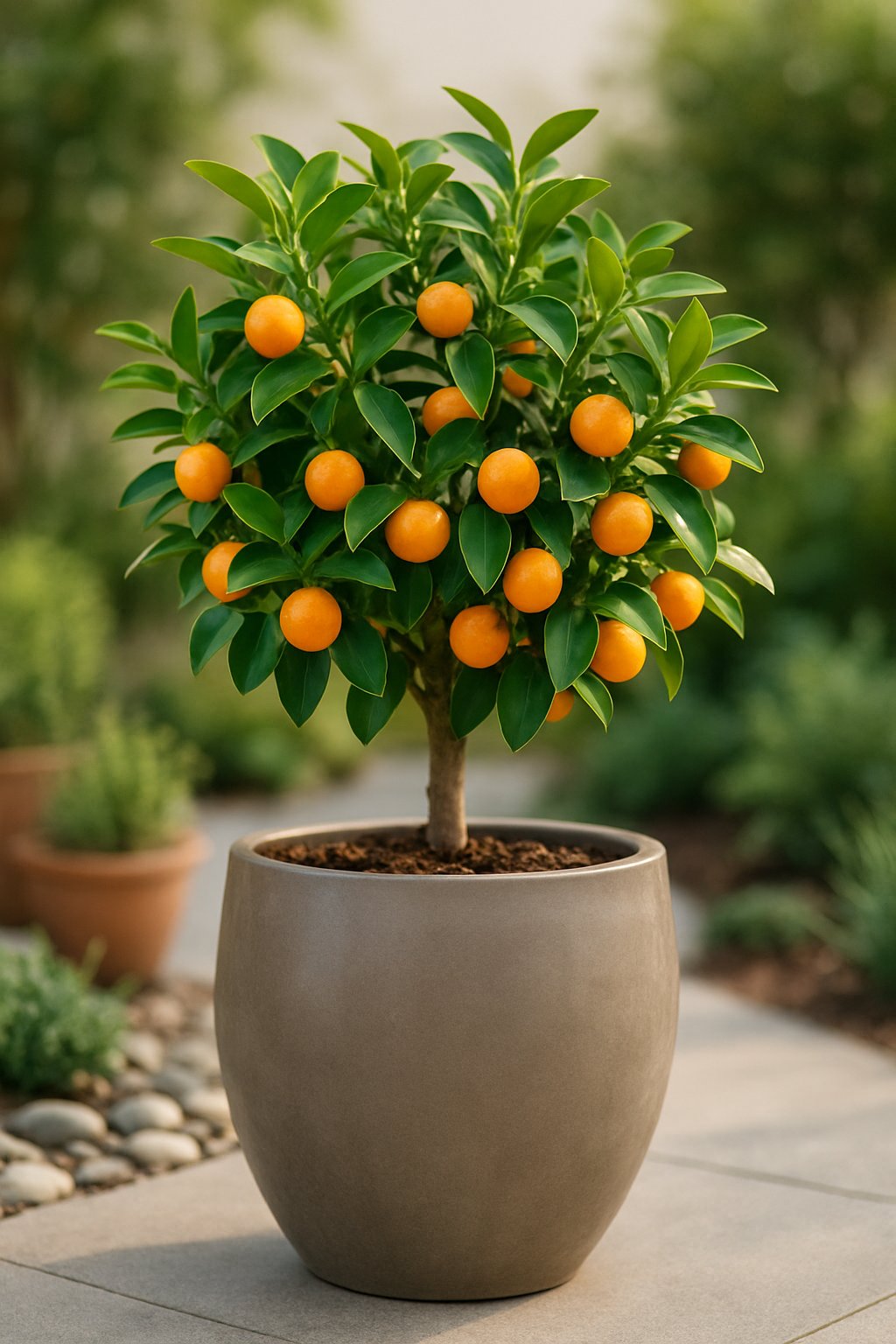
You don’t need a big yard for a citrus tree. A small citrus tree in a big planter can totally thrive on your patio or balcony.
Dwarf lemons or mandarins are perfect for tight spaces. They need lots of sun, so put the planter where it gets 6-8 hours a day.
Water often, but make sure the soil drains well. If it gets cold, just move the planter inside.
Prune the tree to keep it the right size for your spot. You’ll get fresh fruit and a lovely scent, even in a small space.
Expert Tip From MrPlanter: Choose a planter with drainage holes. Give your citrus tree a little citrus fertilizer every few weeks for the best fruit.
7. Mixing pollinator-friendly wildflowers in small patches
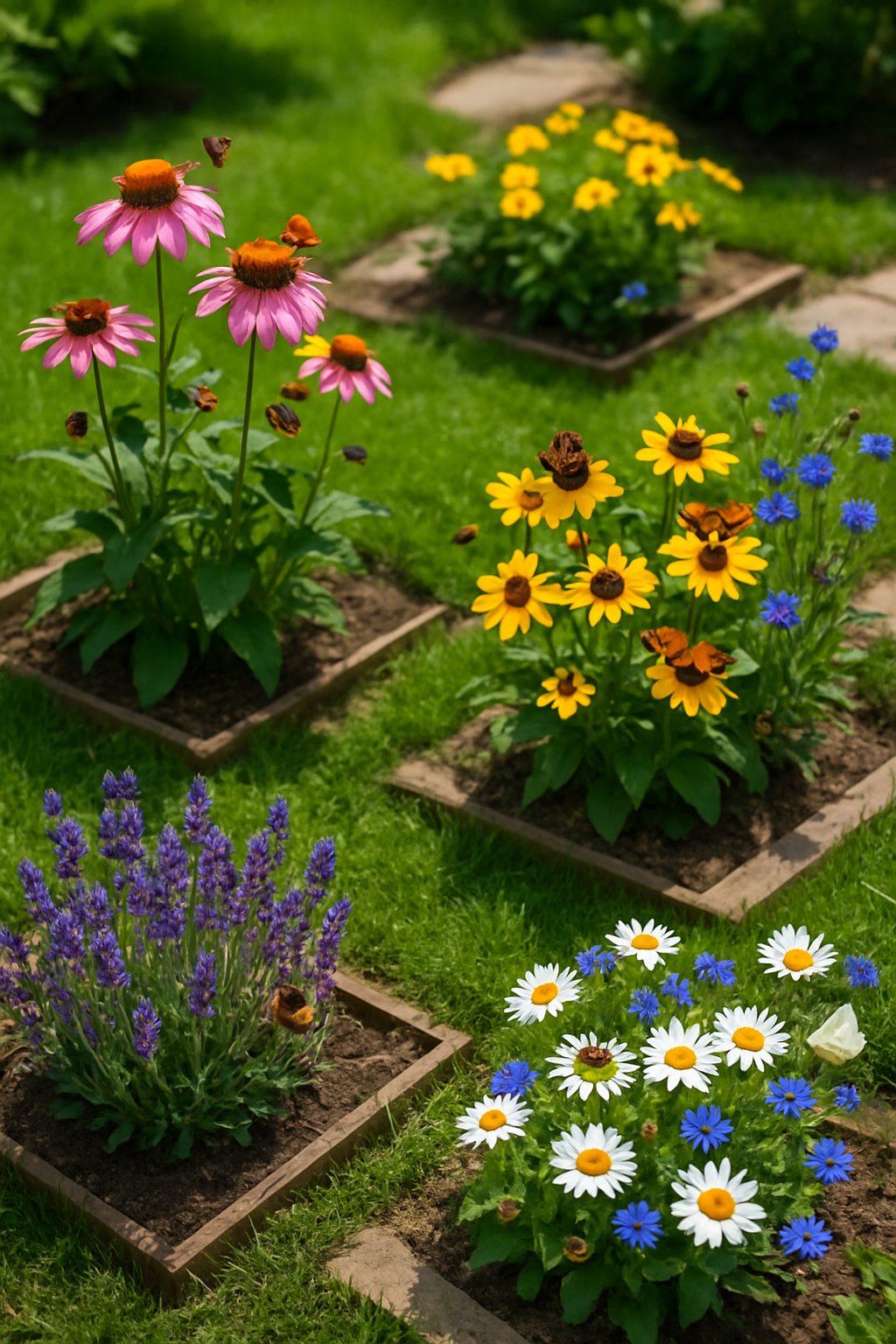
You don’t need a big garden to help bees and butterflies. Even a tiny patch of wildflowers can turn into a pollinator hotspot.
Go for native wildflowers—they’re easier to grow and attract local pollinators. Scatter seeds after the last frost, water a bit, and let nature do the rest.
You’ll see more bees and butterflies, which means better flowers and fruit. And honestly, it’s just nice to sit and watch them work.
Expert Tip From MrPlanter: “Plant flowers with different bloom times. You’ll keep the pollinators coming all season.”
8. Using gravel paths for easy maintenance
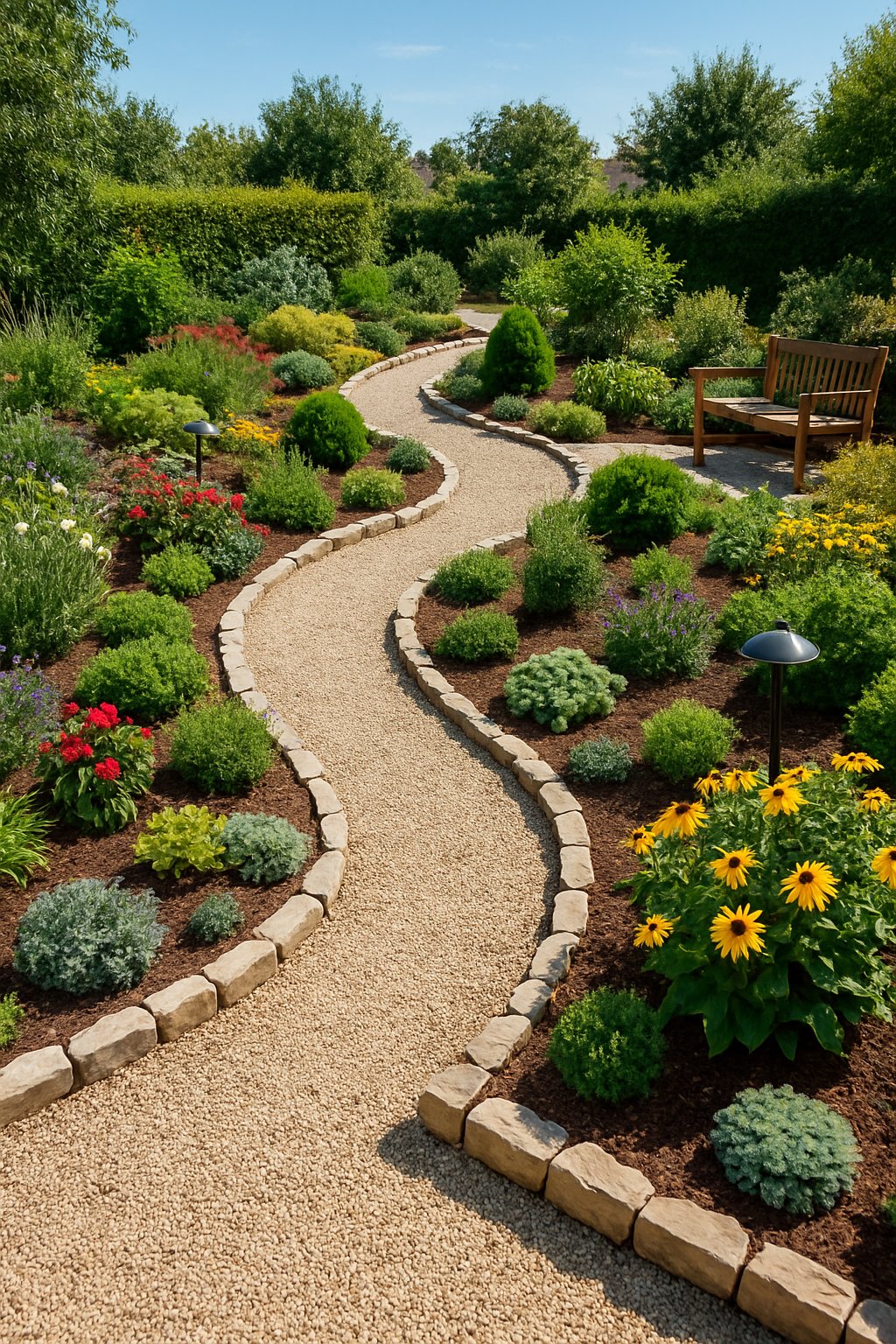
Gravel paths can totally change your garden game. They keep mud and weeds away, so you spend less time fussing.
Gravel drains water fast, which keeps your plants happy. You can make paths curvy or straight, and different colored stones add a cool touch.
Small spaces feel bigger and more organized with gravel paths. If you worry about gravel spreading, edge the path with bricks or wood.
Gravel paths are budget-friendly and easy to install. You don’t have to be a pro to get started.
Expert Tip From MrPlanter: “Use fine gravel for walking and bigger stones for driveways. Lay a weed barrier underneath to keep things tidy.”
9. Incorporating a small water fountain for zen vibes
You might not expect it, but a little water fountain can totally change your garden’s mood. The gentle sound of water helps you relax and tune out the world for a while.
A fountain doesn’t have to be huge or fancy. Even a small, painted one in a corner brings a touch of zen.
Pick a style that matches your space—modern, rustic, whatever you like. Place it near your plants or seating area for a soothing spot.
The moving water attracts birds and butterflies, too, which makes your garden feel alive.
Expert Tip From MrPlanter: “Put your fountain where you can hear it from inside. Set it up in a quiet corner for peaceful moments every day.”
10. Container garden with dwarf vegetables
Not every vegetable needs a big patch of dirt. Dwarf veggies are perfect for patios and balconies.
Grow dwarf beans, peppers, or mini eggplants in small pots. They stay compact, so you can move them around for the best sun.
Containers let you control soil and water. If your ground soil isn’t great, no worries—just use good potting soil.
Pick pots with drainage holes and you’re good to go. It’s honestly so much easier than you’d think.
Expert Tip From MrPlanter: Start with fresh potting soil. Give your veggies at least 6 hours of sunlight a day for the tastiest harvest.
11. Climbing roses on trellis for vertical interest
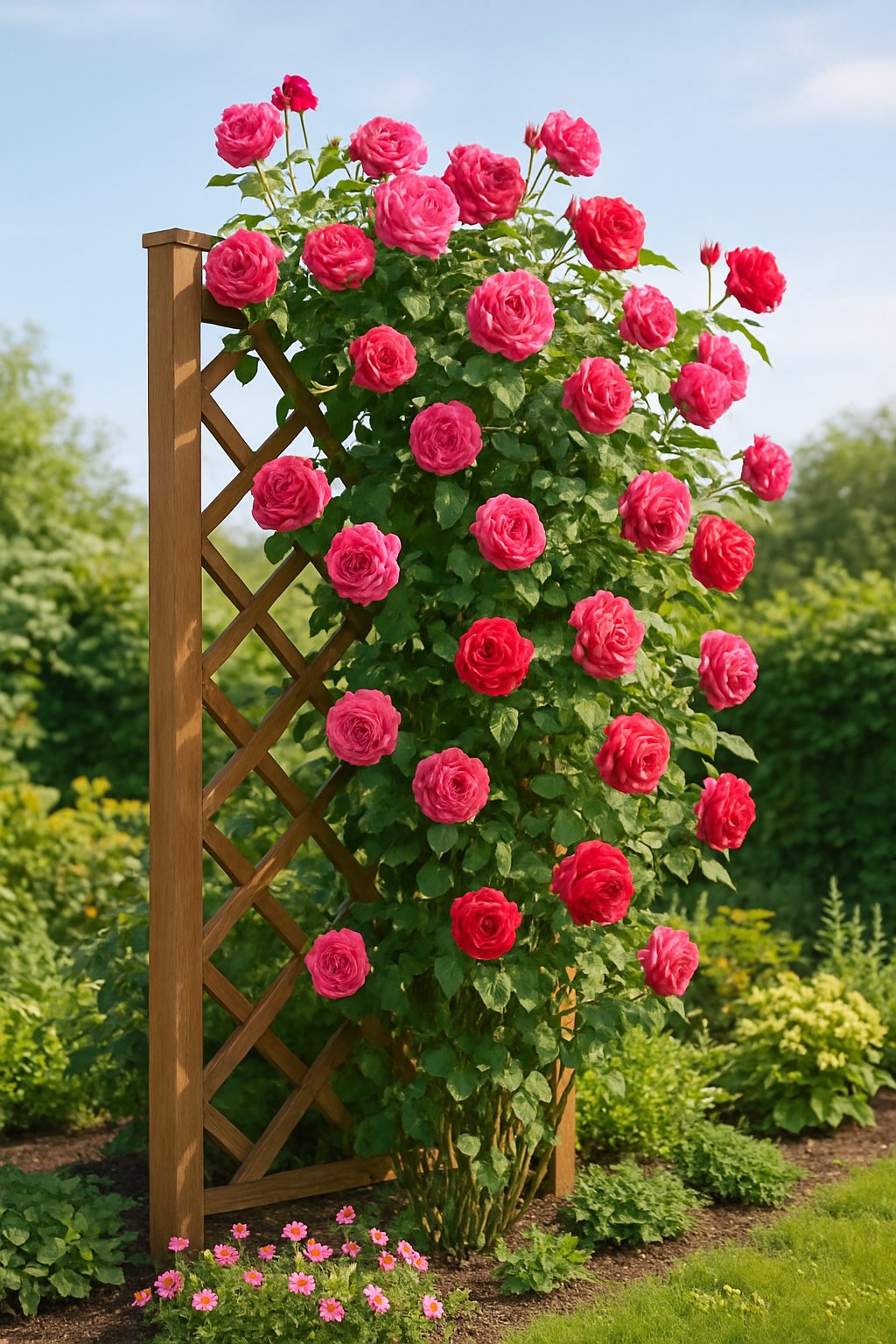
Did you know climbing roses can turn a small garden into a little escape? They don’t hog ground space but add height and color.
Set up a trellis for them to climb and show off their blooms. Pick rose types that fit your climate and sunlight.
Plant them near a trellis or arch and watch them fill your space with color and scent. Pair with simple plants to keep things fresh and easy.
Even in a tight garden, a vertical rose wall adds a whole new vibe. It’s like a living painting that changes with the seasons.
Expert Tip From MrPlanter: Pick a hardy climbing rose for your area. Water regularly and gently tie new shoots to guide their climb.
12. Multi-tiered plant stands for maximizing sunlight
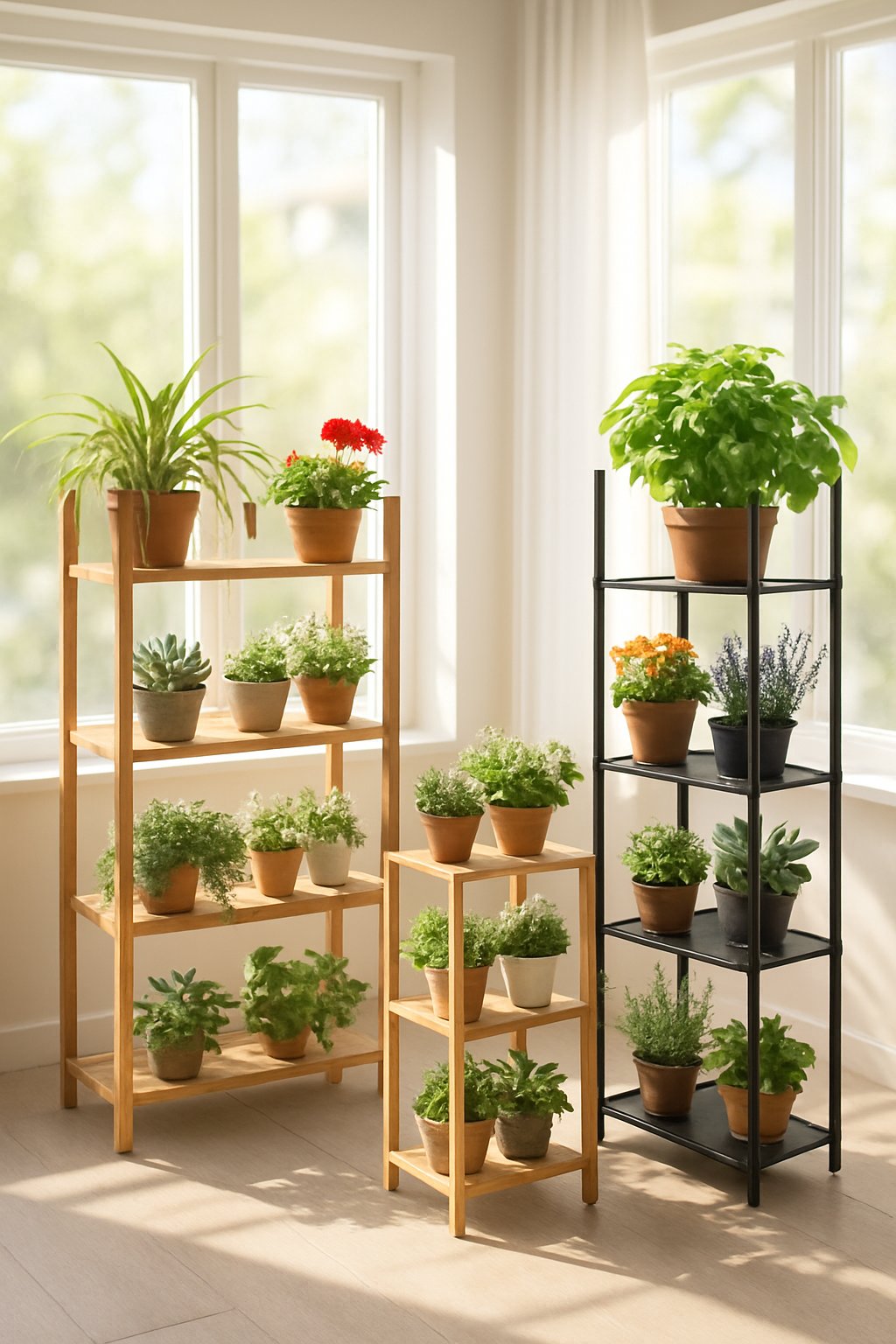
Ever notice how plants end up fighting for sunlight when you crowd them together? I’ve found that using a multi-tiered plant stand sorts this out—suddenly, every plant gets its own level.
You won’t have one plant blocking another anymore, and each one soaks up the light it needs to really thrive. These stands come in all sorts of styles—wood, metal, or even old ladders you’ve got lying around.
They save you space and add this cool, layered vibe to your balcony or garden. Mixing plants with different light needs? That’s much easier when you have a few levels to play with.
When you stack your plants, it makes watering and moving them a breeze. You don’t have to disturb the whole setup just to check on one.
Multi-tiered stands really make your garden look fuller and healthier, even if you’re working with a tiny spot.
Expert Tip From MrPlanter: “Place taller plants on the top tiers and shade-loving ones below. This simple trick helps every plant get just the right amount of sunlight and love.”
13. Planting dwarf lavender for scent and color
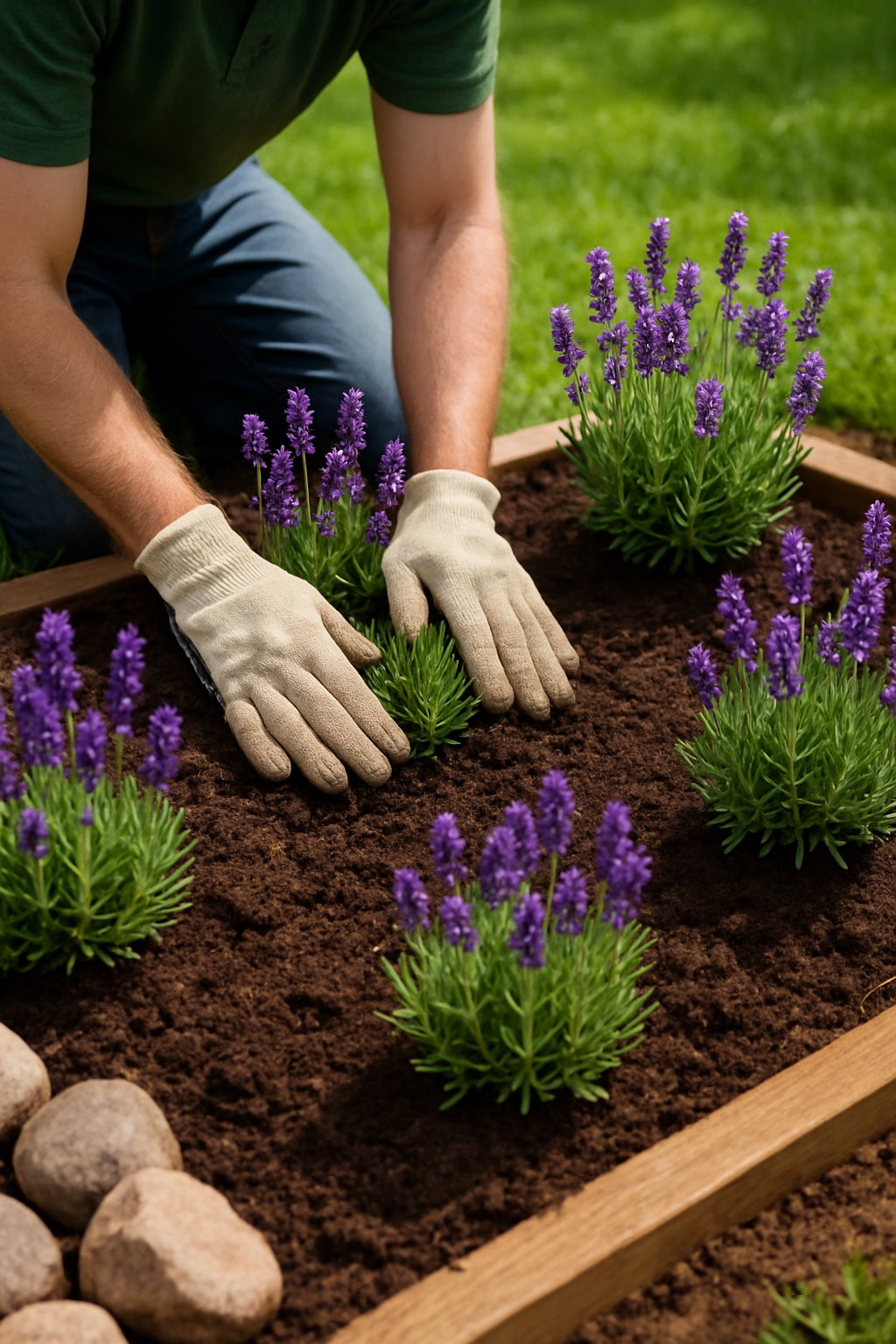
Lavender’s famous for its scent, right? But dwarf lavender? That’s the same lovely smell, just packed into a smaller, tidier plant.
If you want your garden to look bright and smell amazing but don’t have a ton of space, this little plant is a winner. Dwarf lavender grows to around 12 to 18 inches tall, so it fits perfectly in small beds, borders, or even pots.
You just need to give it some sun and well-drained soil, and it’ll be happy. Try planting it near your favorite chair or a window—then you get that calming scent every time you step outside.
Those soft purple flowers add a gentle pop of color that just works, no matter your garden style.
Expert Tip From MrPlanter: Pick a sunny spot for your dwarf lavender. It loves the sun and well-drained soil. Water it regularly but don’t let it sit in water.
14. Decorative painted stones as garden markers
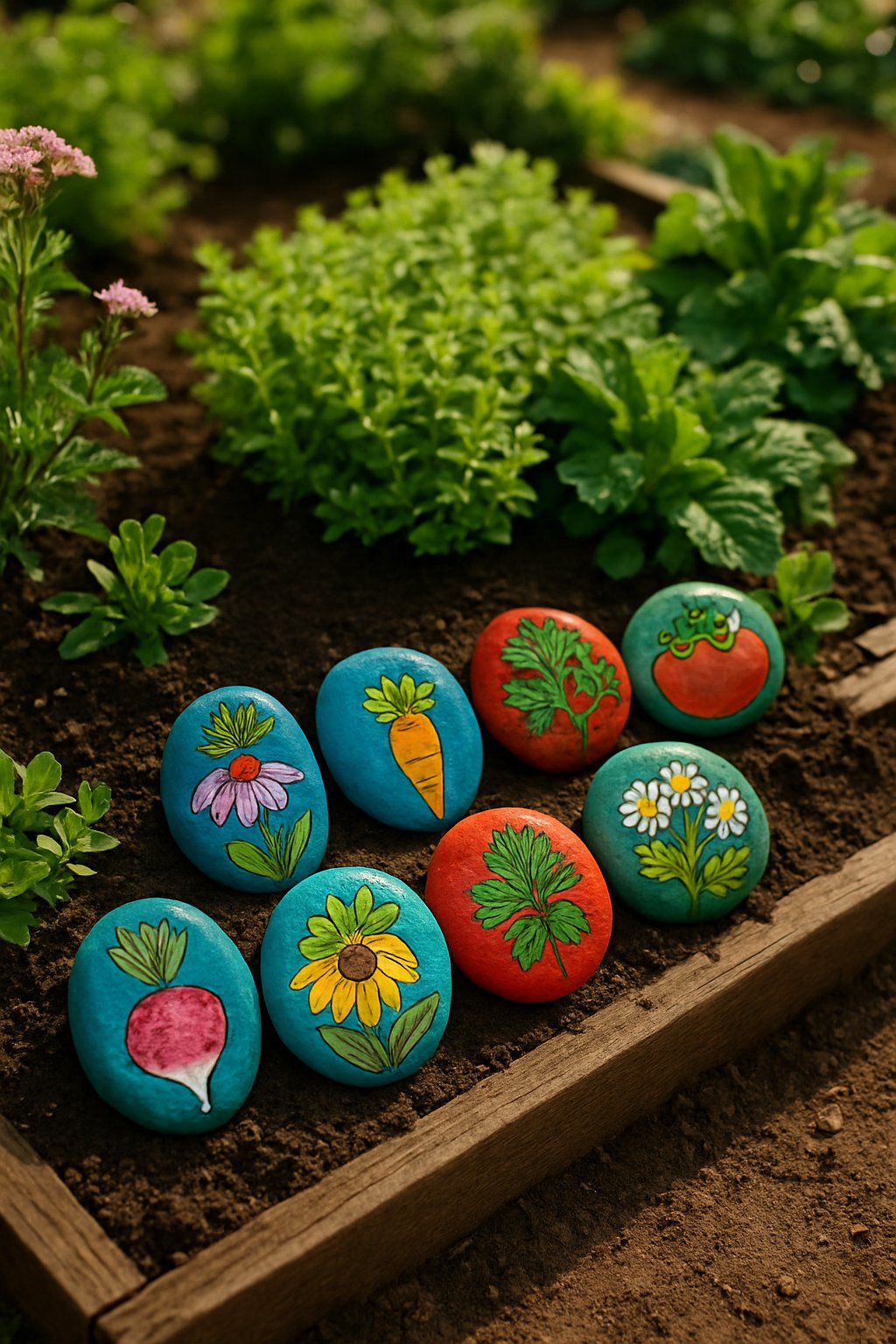
Ever lost track of what you planted where? Yeah, me too—especially when things start growing fast.
Painted stones fix that and add a bit of fun at the same time. You don’t need to be an artist or buy fancy supplies.
Just grab some smooth stones and outdoor paint. Paint the plant name or doodle a little flower or bug—whatever makes you smile.
These stones brighten up your garden and help you remember what’s what. They don’t take up space, but they add a lot of charm.
If you have kids around, they’ll love helping you paint them. It turns into a fun little family project.
Expert Tip From MrPlanter: Pick stones that are flat and smooth for easy painting. Use weatherproof paint so your markers last through rain and sun.
15. Solar-powered garden lights for ambiance
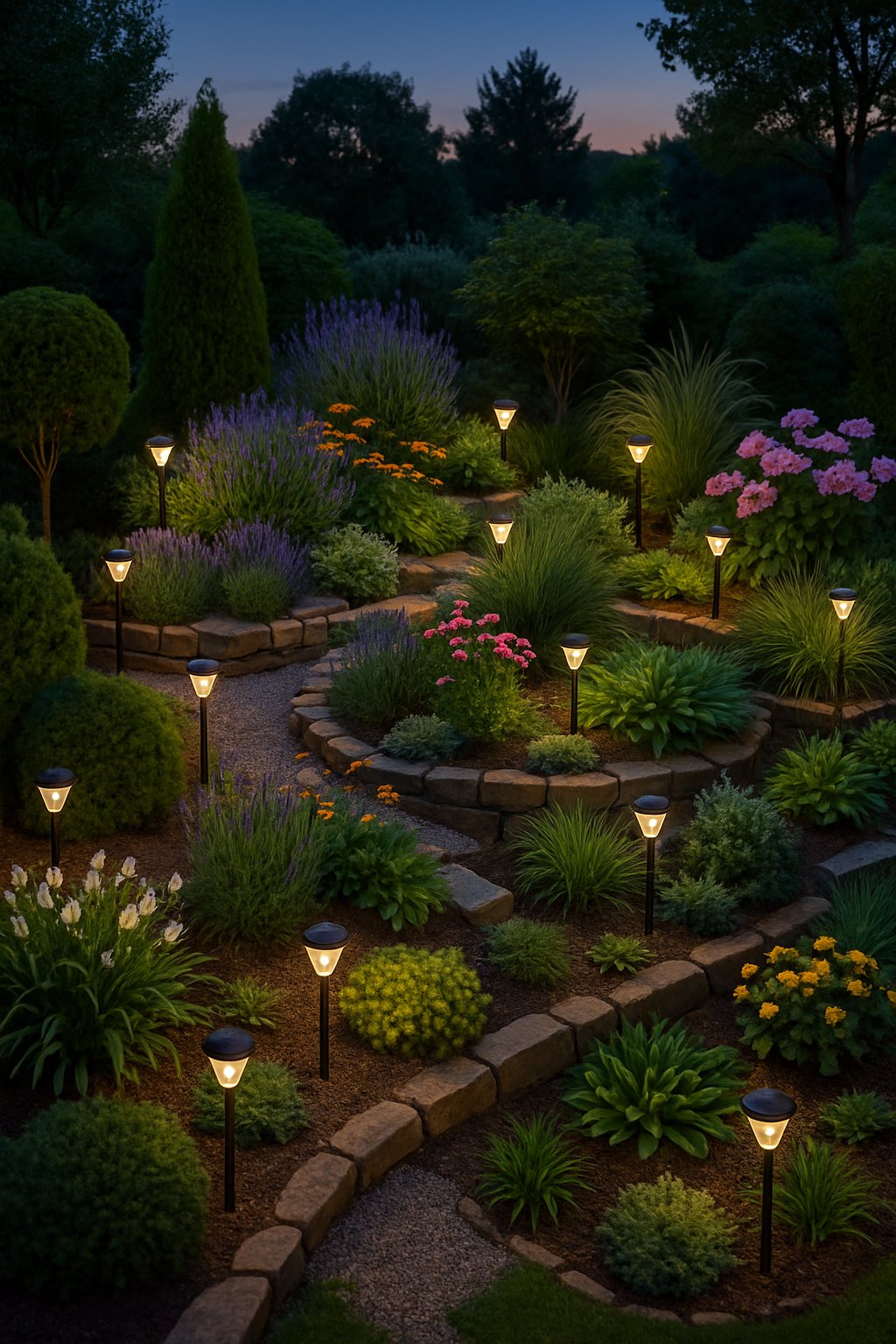
A lot of people think garden lights mean higher bills or complicated wiring. But honestly, solar lights change everything.
They soak up sunlight all day and give you a soft, warm glow at night—no extra electricity needed. You can line your paths with solar stakes or hang little lanterns from a tree branch.
It’s such a cozy vibe, perfect for relaxing or chatting with friends after dark. Solar lights come in all sorts of styles, so you’ll find something that fits your garden’s mood.
All you really need is a sunny spot, and the lights do the rest. It’s such a simple, eco-friendly way to make your garden shine.
Expert Tip From MrPlanter: “Place solar lights where they get at least six hours of sun for the best glow. Clean the solar panels regularly to keep your lights shining bright.”
16. DIY vertical pallet planter for strawberries
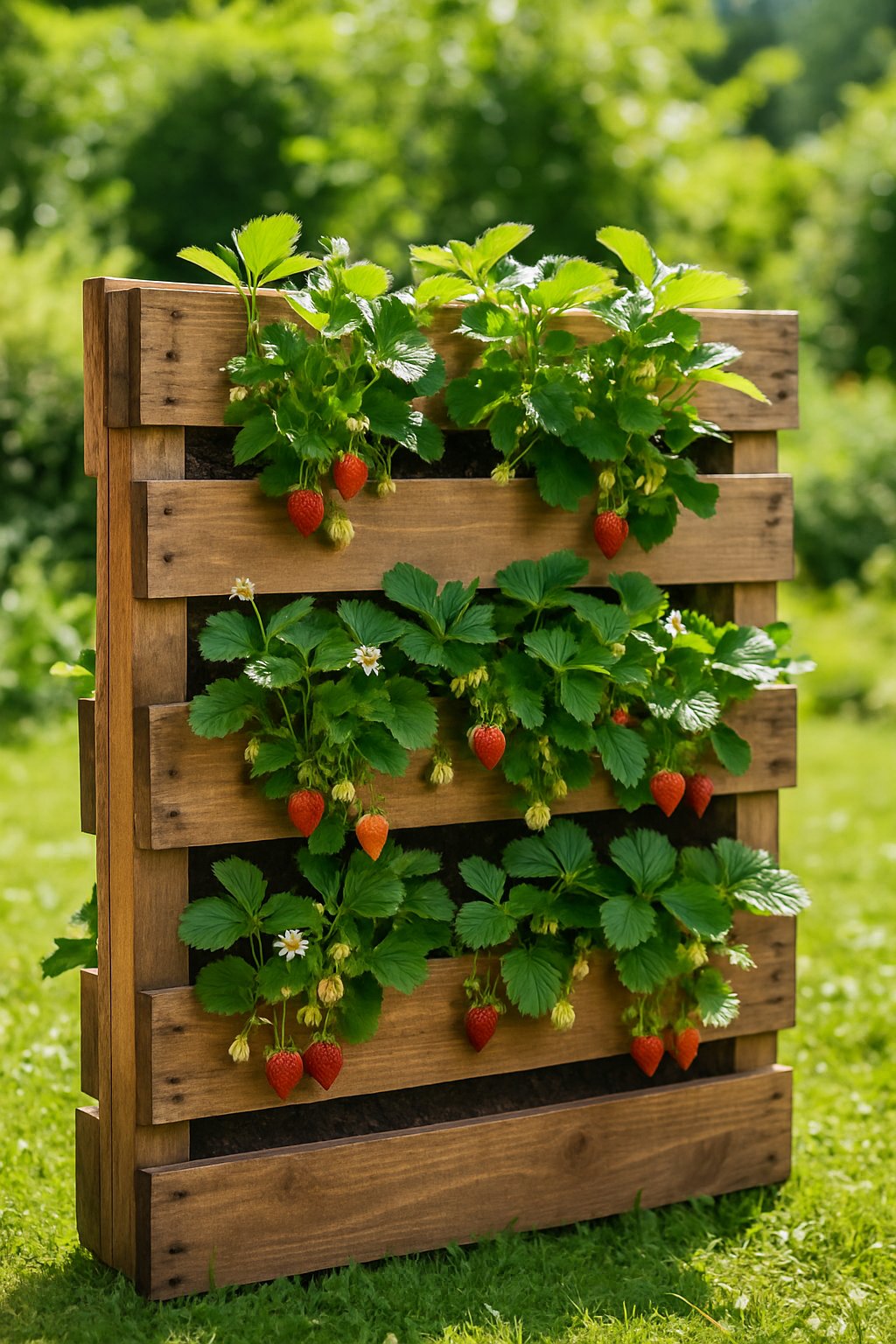
Think you can’t grow strawberries in a tiny garden? Actually, you totally can with a vertical pallet planter.
Grab an old wooden pallet and add some pockets or shelves for soil and plants. This way, you stack your strawberries up instead of spreading them out.
It’s perfect for balconies, patios, or any small yard. Using recycled materials keeps costs down, and the vertical design keeps your berries clean and off the ground.
Plus, it just looks charming and keeps things organized.
Expert Tip From MrPlanter: Choose a pallet made of untreated wood to keep your strawberries safe. Water your plants gently to avoid washing soil from the shelves.
17. Adding aromatic herbs like thyme to seating areas
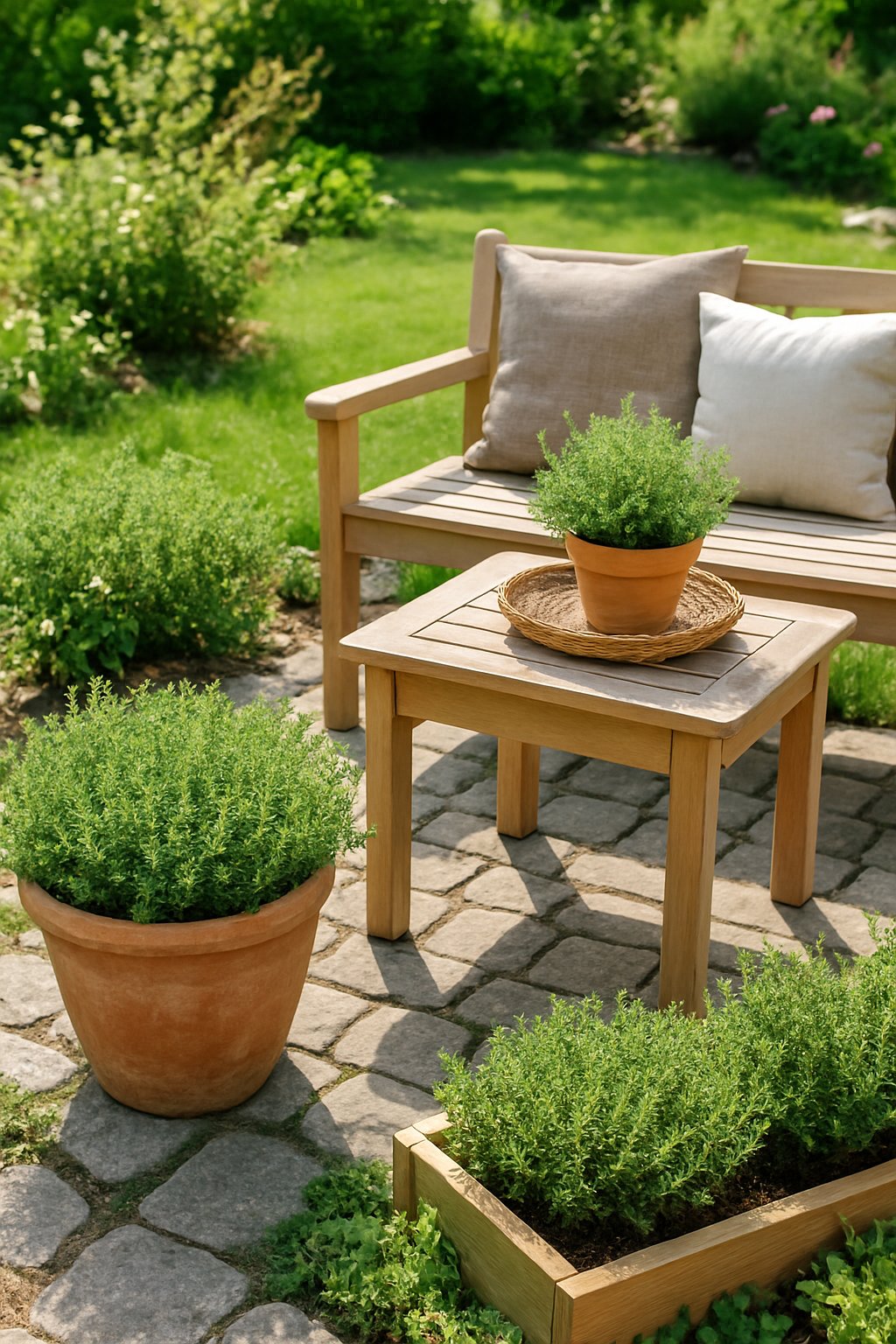
Ever notice how a little whiff of herbs like thyme can make your garden feel extra cozy? When you plant thyme near your seating area, it gives off this fresh, gentle scent every time you brush past.
That makes your outdoor spot feel peaceful and inviting. Thyme’s easy to grow and spreads out nicely, so it softens the edges of stones or walkways around your chairs.
It attracts pollinators too, adding life and color without making things look busy. And hey, you can snip a few leaves for your kitchen right after sitting outside.
These plants don’t need much room, which is perfect for small gardens. You get lovely smells and natural decoration all year round.
Expert Tip From MrPlanter: Try planting thyme in small containers around your seating area for easy care and to adjust placement anytime. Don’t forget to crush a sprig in your hand occasionally to release the scent and enjoy the fresh boost.
18. Using reflective surfaces to increase light
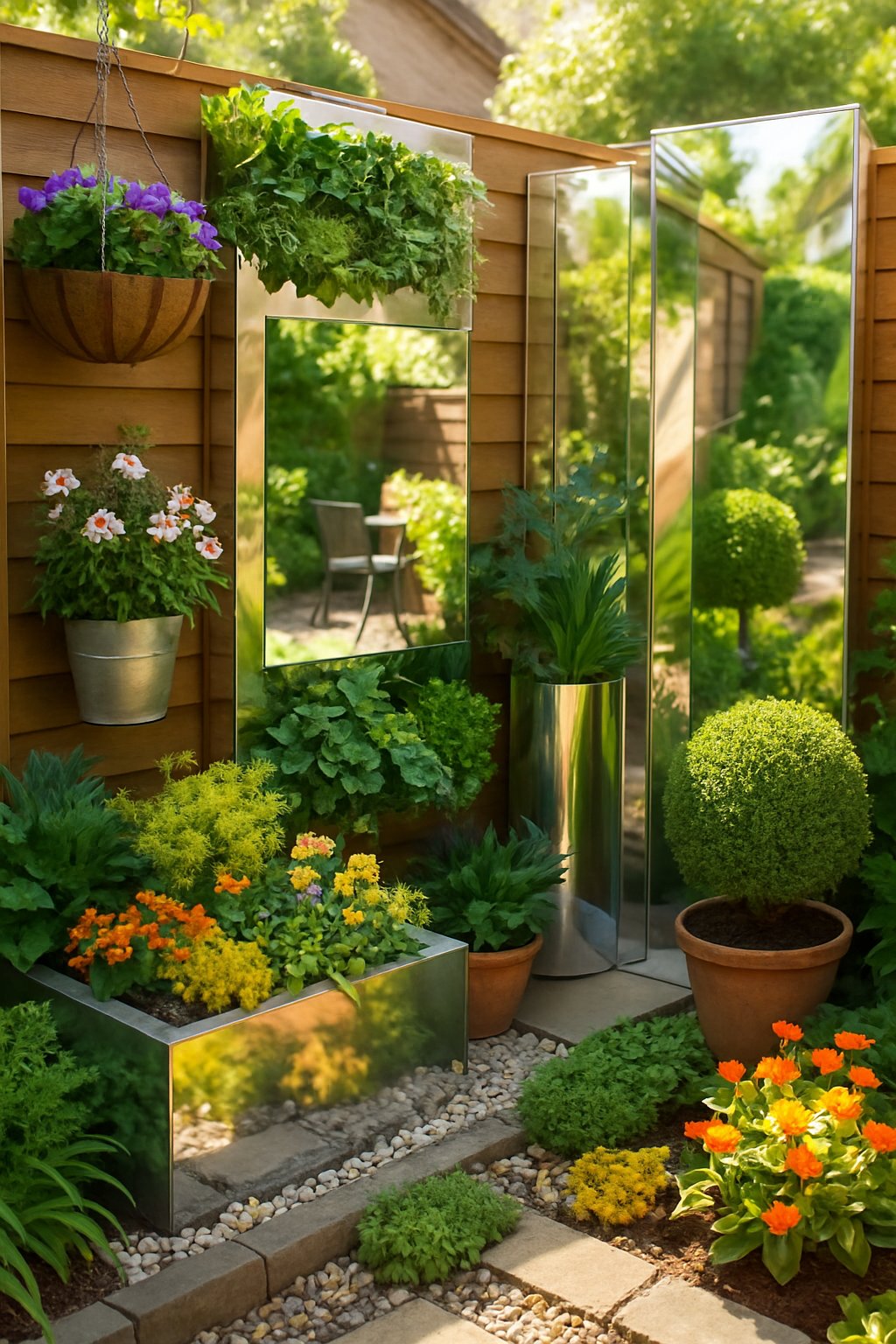
Have you ever noticed your garden just doesn’t get enough sunlight, especially if tall trees or buildings surround it? You can fix that by adding shiny things like mirrors, metal, or even light-colored walls.
These surfaces bounce sunlight into darker spots, letting your plants catch more rays. You don’t need fancy tools for this—polished stones or garden ornaments do the trick too.
Just place them where they’ll catch the sun, and suddenly those dim corners feel brighter. Reflective surfaces also make your garden look bigger and more inviting.
They add a bit of sparkle and help your plants thrive at the same time.
Expert Tip From MrPlanter: “Try placing a mirror opposite your sunniest spot to double sunlight in shady areas. Keep your reflective surfaces clean so they bounce the most light possible.”
19. Edible flower beds for culinary and visual appeal
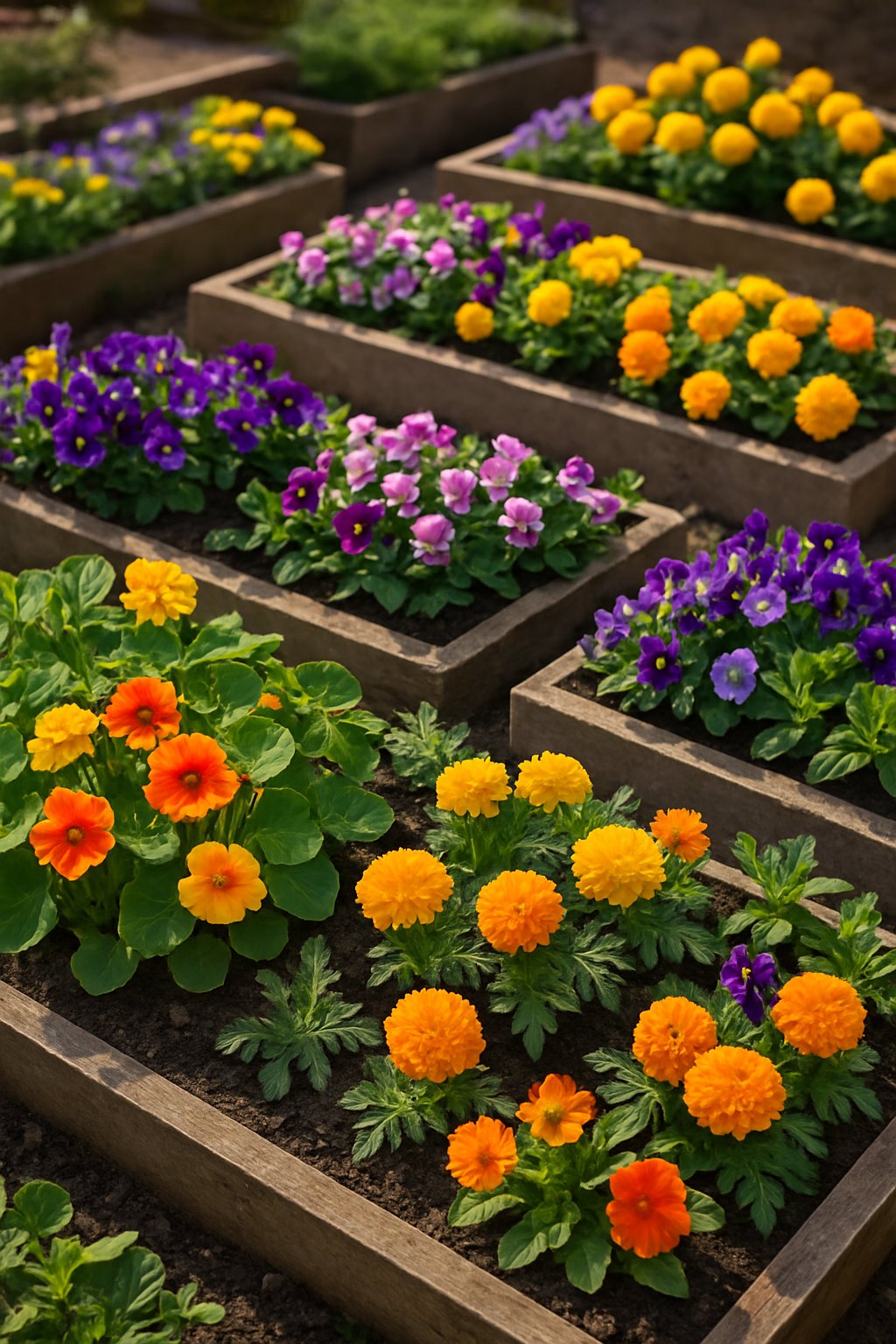
Did you know a lot of flowers you grow can actually be eaten? Adding edible flower beds to your small garden is a fun way to bring color and fresh flavors to your food.
Flowers like nasturtiums, violets, and calendulas look pretty and add easy, tasty touches to salads, desserts, or drinks. Mix these blooms with your veggies or herbs for a garden that’s both beautiful and useful.
Plants like squash blossoms attract bees too, which help pollinate your garden. Start with flowers that grow well in your area and are safe to eat.
That way, you can enjoy fresh food and relaxing colors every day.
Expert Tip From MrPlanter: “Pick flowers earlier in the day when they are fresh and vibrant. Always double-check which flowers are edible before using them in your meals.”
20. Creating a tiny butterfly garden with milkweed
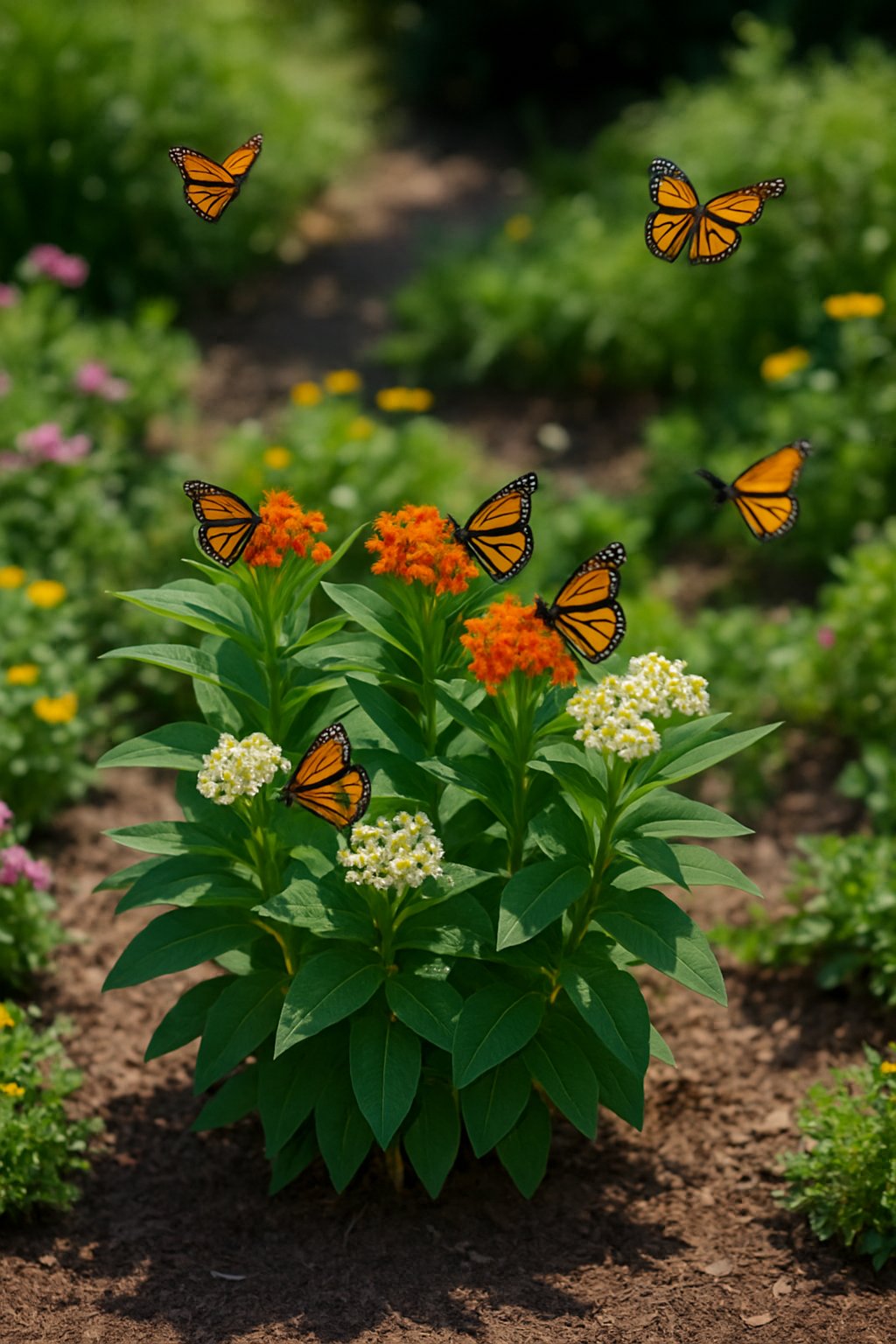
Did you know milkweed is the most important plant for monarch butterflies? Without it, their babies have nothing to eat.
Even a super small garden can attract these beautiful butterflies if you plant milkweed. Pick a sunny spot and plant a few—milkweed doesn’t need much space, but it makes a huge difference.
Add some nectar flowers nearby so butterflies have a picnic spot. Make sure your garden drains well and skip the chemicals.
Butterflies need a safe place to rest, eat, and lay eggs. With a bit of care, your tiny garden might just become a monarch hangout.
Expert Tip From MrPlanter: Choose native milkweed for your region; it grows better and helps the local butterflies more. Add a shallow water dish to keep your butterflies happy and hydrated.
21. Raised beds lined with reclaimed bricks
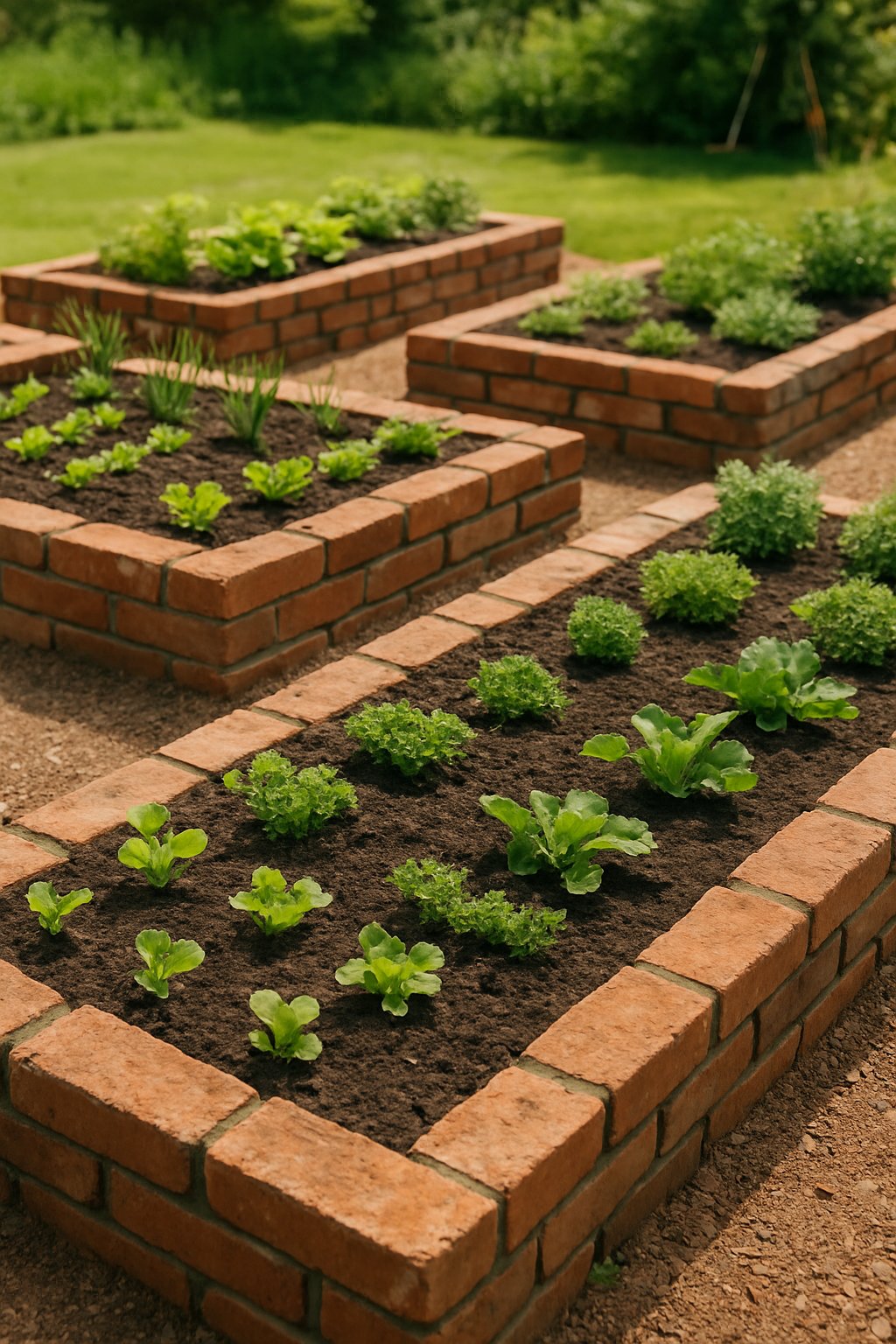
It’s kind of wild how much charm old bricks can bring to a small garden. Using reclaimed bricks for raised beds saves you money and adds a ton of character.
You get a sturdy frame that’ll last and look good. The cool thing is you don’t need fancy tools or skills.
Just stack the bricks—no mortar needed—so you can change the shape later if you want. Bricks help with drainage too, so your plants won’t get soggy.
Reclaimed bricks give your garden a vintage feel. Each one’s got a story, and your space ends up feeling unique.
You can grow herbs, veggies, or flowers in a neat, cozy spot.
Expert Tip From MrPlanter: Always clean your reclaimed bricks well before building. This keeps your raised bed safe and helps your plants grow healthier.
22. Planting compact dwarf conifers for year-round structure
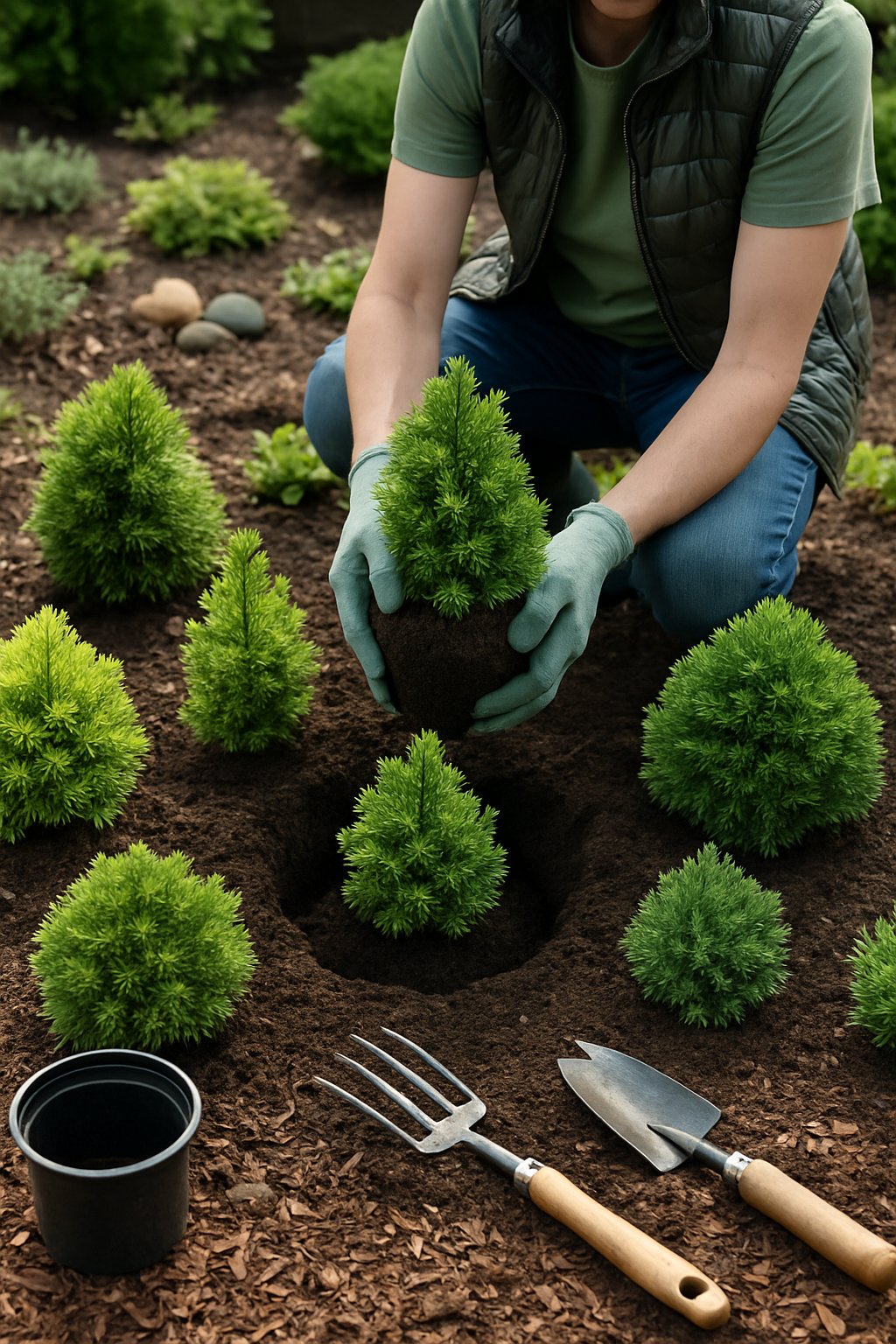
People say small gardens can’t have year-round structure, but that’s not true. Dwarf conifers are perfect if you want greenery even in the middle of winter.
You’ll find compact junipers, pines, yews, and spruces that fit tiny spaces and don’t ask for much care. They keep their color and texture through every season.
Since they grow slowly, you don’t have to worry about things getting crowded. Dwarf conifers add depth and interest without eating up space.
They look great on their own or mixed with other plants. Plus, they handle rough weather better than a lot of shrubs out there.
Expert Tip From MrPlanter: Start with one or two dwarf conifers to see how they fit your space. Remember, they grow slowly, so patience pays off with beautiful year-round green.
23. Portable mini greenhouses for seasonal extension

You might think the growing season ends when it gets cold, but that’s not really true. Portable mini greenhouses help you keep plants safe from frost and chilly winds.
They create a warm little space where your garden can keep going longer. These greenhouses are great if you don’t have a big yard.
You can move them around to catch the sun or shield plants from bad weather. Some even fold up for easy storage.
A lot of mini greenhouses are simple to build with stuff you might already have, like PVC pipes or old window frames. They don’t take up much space, but they give your plants a cozy home.
Expert Tip From MrPlanter: Choose a mini greenhouse that fits where you garden, so you can move it as needed. Check your plants often to keep the air fresh inside without losing warmth.
24. Color-themed small flower beds for visual impact
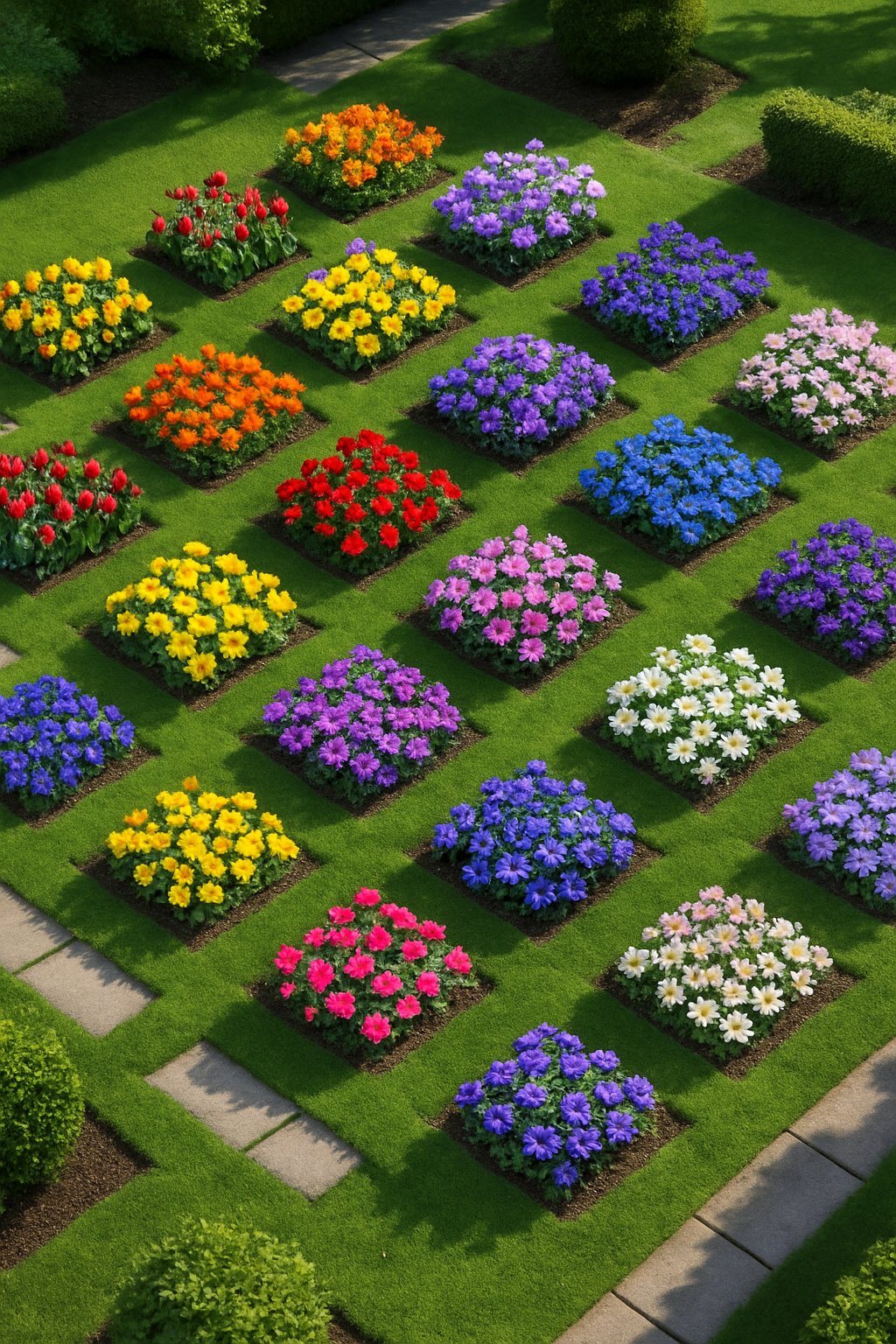
Ever looked at a tiny garden and thought, “Well, there’s not much I can do here”? I get it. But honestly, the magic of color themes can totally flip that script.
If you pick flowers in similar shades, you’ll notice your garden suddenly feels more put together. It’s weirdly satisfying and way more striking than you’d expect.
Try focusing on one or two colors that really speak to you. Reds and blues? They’re bold and stand out. Pastels, on the other hand, bring this gentle, peaceful vibe.
Mix up the flower shapes and heights a bit. Even if you stick to just a couple of colors, it keeps things from feeling flat or boring.
Oh, and here’s something I learned the hard way—choose flowers that bloom at different times. That way, your space doesn’t go dull for months at a stretch.
You and I both want that fresh, lively look all year, right? Planning for blooms in every season is the trick.
Expert Tip From MrPlanter: Pick flowers that bloom in waves. It’s honestly not hard, and your garden will stay joyful and colorful no matter what month it is. We all deserve a little color, don’t we?

